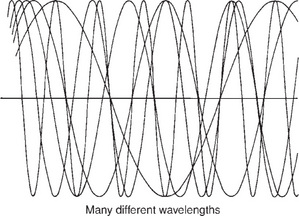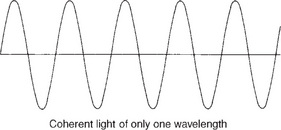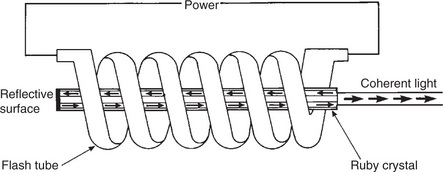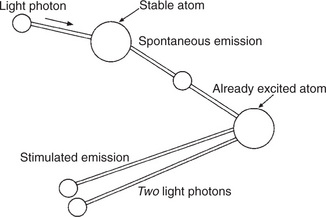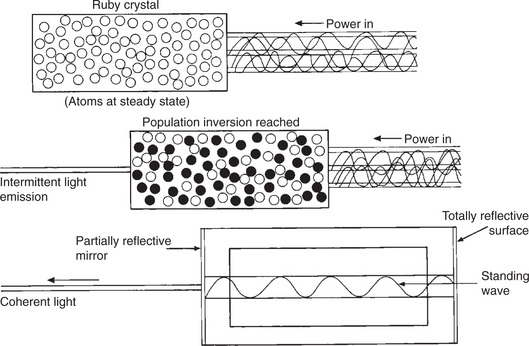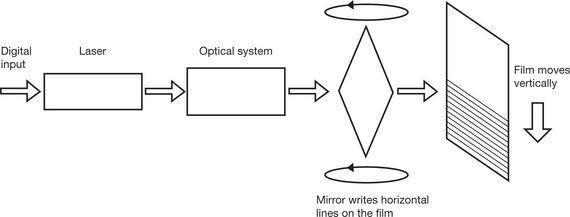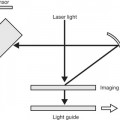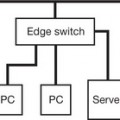6 Laser imaging
| Light and the Laser | White light |
• Made up of varying wavelengths
• Ranges from ultraviolet in the short wave, through visible light, to infrared in the long wavelengths
• Very short coherence lengths, due to the number of different wavelengths and the anti-phase components cancelling one another out
Laser light
• Only one wavelength
The First LaserPulsed laser
In 1960, Theodore Maiman, working at the Hughes Aircraft Electronic Research Laboratory, built the first laser
• It was basically a photographer’s electronic flashgun wound around a crystal of synthetic ruby (aluminium oxide mixed with a small amount of chromium)
• The synthetic ruby was in the form of a tube with a mirror at each end of the tube
• One mirror was a partial reflector
• The distance between the mirrors was precisely defined
• It was tuned to make the light produced bounce back and forth in a regular and reinforcing pattern to create standing waves of light in the rod which had a pulse of about three thousandths of a second
| The Basic Physics |
• If a photon is fired at an atom, the atom can absorb the photon and thus be raised to an excited state
• The only way that the atom can return to stability is by releasing this absorbed energy in the form of a photon of light (spontaneous emission)
|
| Inside a Laser |
• The atoms are stimulated by an external power source to produce stimulated emission
• When a stage is reached, whereby half the atoms are in an excited state, population inversion occurs (Fig. 6.5)
• If more photons are then fired, stimulated emission takes place. Stimulated emission occurs because it is more likely that the photons will strike an already excited atom rather than a stable atom
• If the above events occur in a tube, the tube can be ‘tuned’ to encourage the light produced to oscillate in a regular pattern
• The light then breaks out as an extremely coherent, parallel beam of light which contains a considerable amount of energy – laser light
|
| Continuous Wave Gas Laser |
• Uses helium and neon as the lasing material
• The light is very coherent and uniform and can be switched off and on like an electric light
• They are used in laser imagers
|
Fig. 6.6 Continuous wave gas laser.
|
|
|
| Operator Keypad | This allows control of the parameters for imaging at the time of the examination These can include: • Film size
• Format, i.e. the number of images recorded on the film
• Image-store sequence
• Density
• Contrast
• Exposure
• Image polarity
• Clear or black border background
• Number of copies required
• Patient information
• Automatic hospital name, date recording
• Printing of the image
|
| Exposure |
Stay updated, free articles. Join our Telegram channel

Full access? Get Clinical Tree


